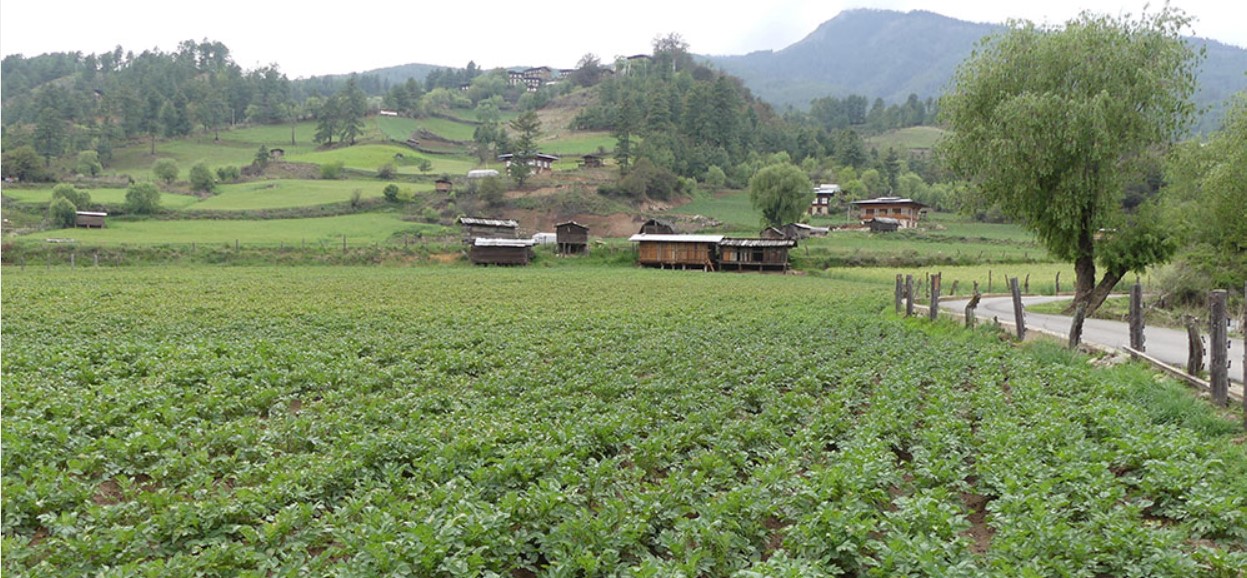MoAL exploring new potato markets in Nepal and Bangladesh

The Ministry of Agriculture and Livestock (MoAL) is exploring new markets in Nepal and Bangladesh to bolster the export of potatoes from Bhutan. This move is mainly geared towards diversifying export markets and tackling price fluctuations that affect thousands of potato farmers in the country. Cultivated across all 20 dzongkhags, potatoes remain one of Bhutan's highest-yield cash crops, with India as the primary export market. However, the Integrated Agriculture and Livestock Census of Bhutan 2022 reveals a significant drop in potato production, from 38,573 metric tonnes (MT) in 2021 to 31,146 MT in 2022 - a 19 percent decline. Major potato-producing regions, including Wangdue, Paro, and Bumthang, saw much lower harvests in 2022, according to the report. Potato production has also fluctuated in the five years between 2018 and 2022, peaking at 45,500 MT in 2020 before falling to 31,146 MT in 2022. During the same period, the number of potato growers also declined from 36,913 in 2020 to 33,096 in 2022. During the National Assembly session early this week, Member of Parliament from Nyisho Saephu, Kuenga, raised concerns regarding the decline in potato growers and production quantity. He recommended establishing local auction yards and attracting diverse buyers to create a more competitive market environment. Agriculture Minister Younten Phuntsho said that the ministry plans to strengthen the newly initiated online auctioning system, which disseminates timely market and price information, and adopt Artificial Intelligence technologies to streamline operations. Data from the Food Corporation of Bhutan Limited (FCBL) shows that in 2022, Bhutan exported 11,736 MT of potatoes worth Nu 194 million, representing a 91 percent increase in both volume and value from the previous year. Currently, there are around 15 cold storage facilities (both public and privately owned) across the country, each with a capacity of over 100 MT. Two additional cold storage facilities in Zhemgang and Samtse will be completed by August this year. "The construction of a potato integrated facility with grading and packaging facilities has been completed in Gangtey, Wangdue, which will be operational soon," Lyonpo said. A new potato warehouse in Chumey, Bumthang is slated for completion by 2026. A similar facility is also planned for Khaling, Trashigang. An agri-food economic hub will also be established in Sarpang to facilitate the export of various commodities, including potatoes. Potato price in Bhutan is determined by production levels in neighbouring Indian states, storage cost, and consumer demand. The prices for large potatoes at auction yards dropped from Nu 27 on June 11 to about Nu 20 per kilogram today. The Programme Officer at the National Centre for Organic Agriculture, Lobzang, said that initiatives, including the import of climate-resilient potato clones from the International Potato Centre (IPC) in Peru and potato varieties from Nepal have been taken. "These efforts have led to the introduction of a potato variety known as Yusi Maap-2 and the evaluation of bio-fortified (tetraploid) clones in multiple locations in Yusipang and Bumthang," he said. Bhutan has also exceeded its target for new potato seed supply, providing 3,150 kilograms against a goal of 2,800 kilograms. Bhutan's primary sector comprises agriculture, livestock and forestry, contributing about 14.67 percent to the country's GDP. Bhutan aims to increase the agriculture sector's contribution to GDP from USD 365 million in 2022 to USD 625 million by 2029, and USD 854 million by 2034.
EMAIL SUBSCRIPTION
Join our email list for the latest updates from FCBL.